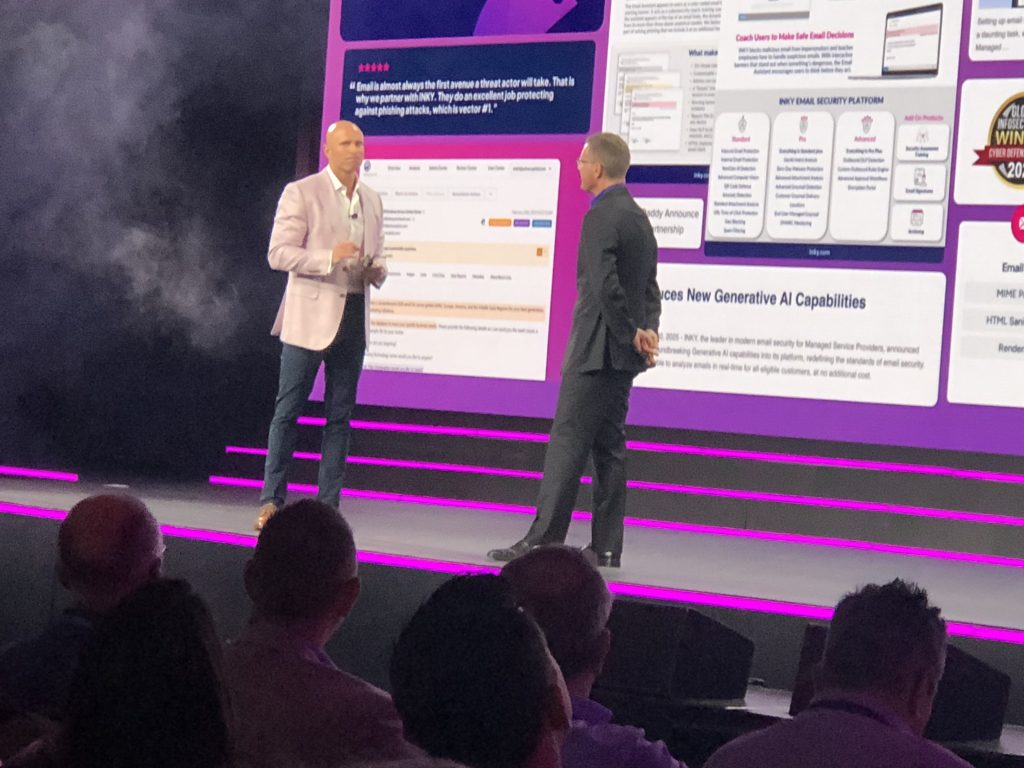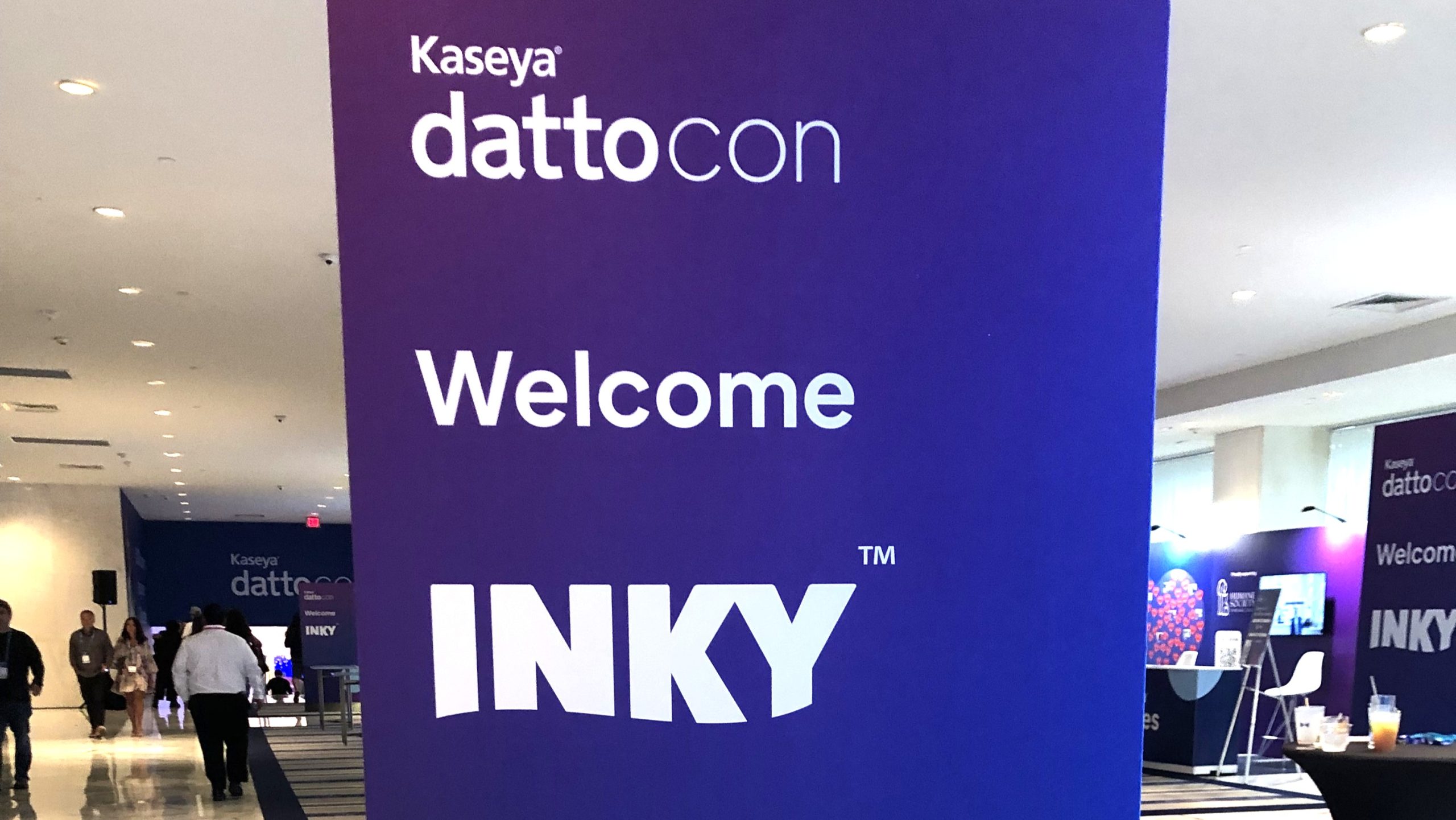When Kaseya announced its acquisition of INKY earlier this fall, it was straightforward. A major platform vendor added a best-of-breed email security specialist to its stack. The real story for MSPs, however, is what comes next.
Email is the most common attack vector facing SMBs. For many Kaseya partners, it previously was the most obvious gap in the vendor’s security portfolio. With INKY now part of the ecosystem, Kaseya is offering MSPs stronger detection, fewer tools to manage, and more value bundled into its Kaseya 365 offering.
“Email security demands a new approach,” Kaseya Chief Product Officer Jim Lippie said during the DattoCon 2025 Opening Keynote in Miami. “Knowing that we had to up our game with email security, we did exactly that.”
Filling a Longstanding Gap
For MSPs, the deal addresses a weakness they’ve had to work around for years.

Matthew Nikravesh
Take Matthew Nikravesh, CEO and co-founder of New York-based Solarus Technologies Inc., an MSP that has worked with Kaseya for more than a decade. His firm has also partnered with INKY since 2021. “To be completely frank, Kaseya did not have a viable product around email security, and this acquisition proves that,” Nikravesh told ChannelPro.
INKY’s addition also signals a shift away from Kaseya’s existing email security tool, Graphus, which the company plans to sunset. “INKY is simply best in class around email security,” Nikravesh added. “It will be a huge win for all the Kaseya partners who subscribe to the K365 offering or those that want to purchase it à la carte.”
Why INKY Fits the Kaseya Platform
INKY Founder and former CEO Dave Baggett, who now serves as Kaseya senior vice president and general manager security suite, framed the deal as a way to push email security beyond traditional filtering and rules-based detection.
“If you think about it, when an attacker sends you a phishing mail, they’re relying on your human visual system to recognize branding,” Baggett said from the DattoCon stage. “For the software to be able to do that and understand how you’re going to interpret the mail, we need to use computer vision.”
INKY has spent more than a decade building AI-driven detection that analyzes visual elements, language, and intent, rather than relying solely on headers or known signatures. Earlier this year, the company rolled out generative AI scanning across every inbound email.

Jim Lippie and Dave Baggett discuss the INKY acquisition.
“Regardless of how the attacker tries to cleverly word something, they can’t fool the system because it understands words and language just like a human,” Baggett said.
INKY’s deeper integration with Kaseya’s broader platform unlocks another advantage: more contextual signals to improve detection accuracy. “To do perfect detection now requires you to look at signals outside of the emails themselves,” Baggett explained. “Integration with the Kaseya platform will give us massive amounts of additional signal that will let us significantly improve the detection capabilities.”
Tangible Benefits for MSPs
For MSPs already using INKY, the acquisition doesn’t change the product they trust. The difference is in the cost, Nikravesh said.
“All of our clients currently have INKY. Both us and our clients are extremely happy with the product. The real benefit for us as the MSP is that the licensing is included in the K365 bundle, which will provide us with some significant cost savings.”

Enrique Resendez
Those savings can translate into either improved margins or easier security conversations with cost-sensitive SMB clients.
Meanwhile, this transaction will make K365 a little bit of an easier sell, according to Enrique Resendez, CEO and founder of 1 MSP LLC based in San Antonio. “We really couldn’t sell it because we were missing the email component,” said Resendez, a customer of both Kaseya and INKY. “Graphus to us was just a glorified email handler. Now, we can offer an amazing email security suite, data backup protection for the whole Microsoft 365 stack, SaaS alerts, security awareness training, and dark web ID monitoring at a price point that makes sense.”
Less Complexity, More Coverage
Beyond pricing, MSPs point to operational simplicity as a major upside. Fewer vendors means less dashboards, fewer integrations, and less time managing tools instead of clients.
INKY’s built-in features such as graymail filtering, user-level customization, and reduced false positives also help cut down on help help desk tickets.
“We’ve always focused on making MSPs’ lives easier,” Baggett said. “I’ve never met an MSP who had any spare time.”
For Nikravesh, this may unlock even more value. “The Kaseya-INKY integration gives us access to features we didn’t previously subscribe to,” he said. “That allows us to provide more protection to our clients at no additional investment.”
The Bigger Picture
INKY’s acquisition fits squarely into Kaseya’s broader strategy of reducing complexity for MSPs and expanding what they can deliver to clients.
“Delivering the best-of-breed products in an integrated platform — that’s exactly what we set out to do,” Lippie said during the DattoCon keynote.
For MSPs, that means stronger email security, fewer gaps in the stack, and an easier path to selling comprehensive protection without adding another vendor to manage.
Anjali Fluker is managing editor of The ChannelPro Network, where she covers news, trends, and best practices for the MSP community. She specializes in telling the stories that matter to IT providers serving the SMB market. When she’s not reporting on the latest in managed services, she’s connecting with channel pros at industry events across the country.
Images: Anjali Fluker/ChannelPro Network, Linked In













